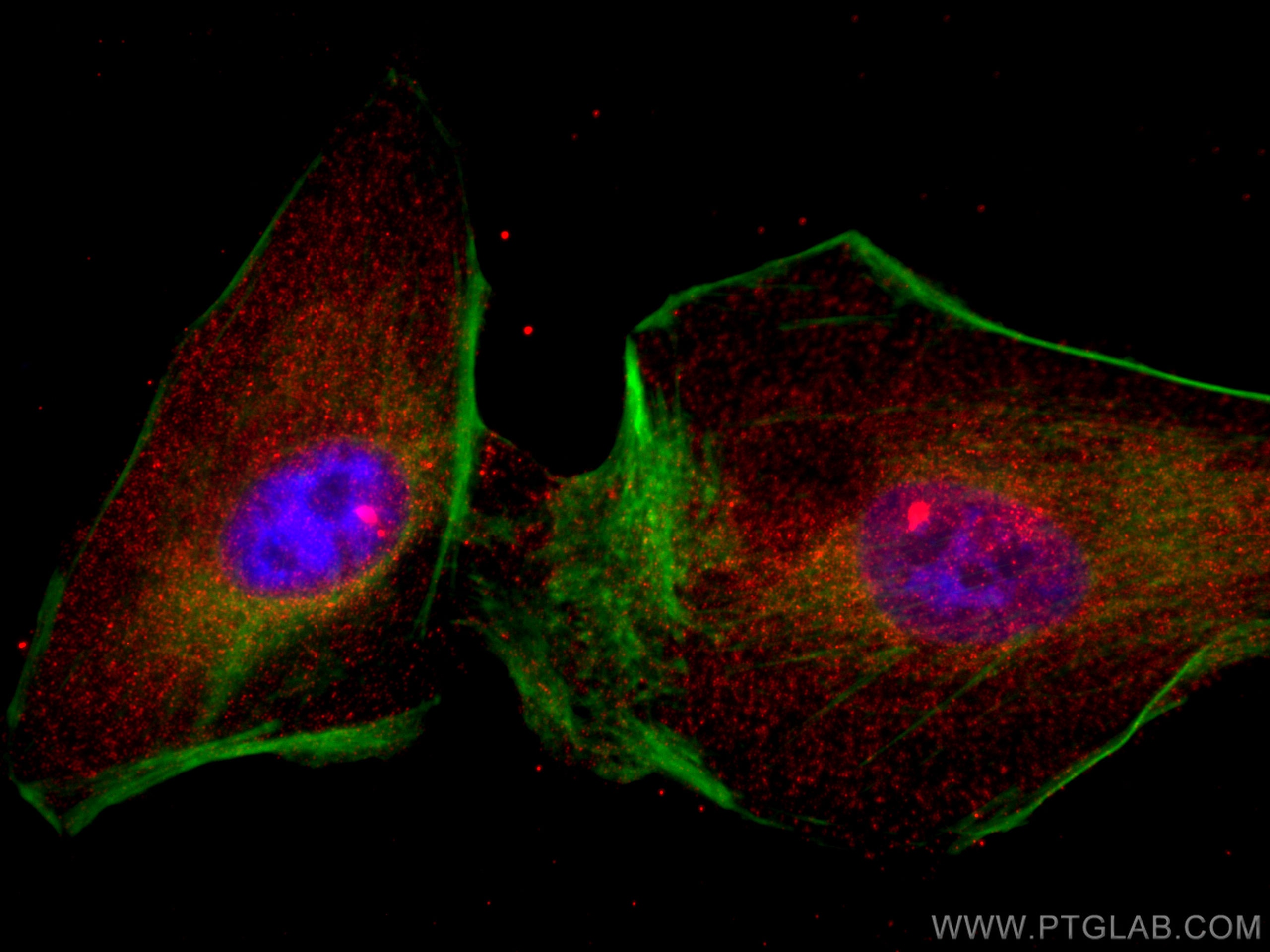Tested Applications
| Positive IF/ICC detected in | A549 cells |
Recommended dilution
| Application | Dilution |
|---|---|
| Immunofluorescence (IF)/ICC | IF/ICC : 1:50-1:500 |
| It is recommended that this reagent should be titrated in each testing system to obtain optimal results. | |
| Sample-dependent, Check data in validation data gallery. | |
Product Information
CL594-67163 targets HIP1 in IF/ICC applications and shows reactivity with Human, mouse, pig samples.
| Tested Reactivity | Human, mouse, pig |
| Host / Isotype | Mouse / IgG1 |
| Class | Monoclonal |
| Type | Antibody |
| Immunogen | HIP1 fusion protein Ag17982 Predict reactive species |
| Full Name | huntingtin interacting protein 1 |
| Calculated Molecular Weight | 1037 aa, 116 kDa |
| Observed Molecular Weight | 110-120 kDa |
| GenBank Accession Number | BC110545 |
| Gene Symbol | HIP1 |
| Gene ID (NCBI) | 3092 |
| RRID | AB_2920092 |
| Conjugate | CoraLite®594 Fluorescent Dye |
| Excitation/Emission Maxima Wavelengths | 588 nm / 604 nm |
| Form | Liquid |
| Purification Method | Protein G purification |
| UNIPROT ID | O00291 |
| Storage Buffer | PBS with 50% glycerol, 0.05% Proclin300, 0.5% BSA, pH 7.3. |
| Storage Conditions | Store at -20°C. Avoid exposure to light. Stable for one year after shipment. Aliquoting is unnecessary for -20oC storage. |
Background Information
HIP1 (huntingtin interacting protein-1) is a endocytic protein that plays a role in clathrin-mediated endocytosis and trafficking. HIP1 can interact with huntingtin (HTT) protein whose mutations cause Huntington's disease (HD), thus gets involved in neurodegeneration. By stabilizing receptor tyrosine kinases following ligand-induced endocytosis, HIP1 may act to promote cell survival. HIP1 is overexpressed in a variety of human cancers and may be a potential predictor for cancer progression and prognosis.
Protocols
| Product Specific Protocols | |
|---|---|
| IF protocol for CL594 HIP1 antibody CL594-67163 | Download protocol |
| Standard Protocols | |
|---|---|
| Click here to view our Standard Protocols |



